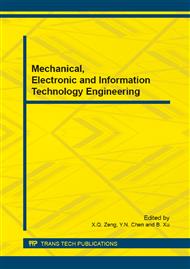p.641
p.646
p.652
p.656
p.660
p.667
p.673
p.679
p.683
Mechanism Research of Bus Dynamic Information Impact on the Commuter Travel Behavior
Abstract:
In this paper, according to the characteristics of the bus travel decision-making, the traffic behavior selection data in Nanjing were collected by designing traffic wishes questionnaires and a binary logit model was built on dynamic information service under the bus commuters travel route choice behavior of binary logit model. This paper analyses the effect by using the model parameter calibration including bus-taking time, bus congestion and personal information e.g. age and gender on the bus commuters travel route choice behavior. Studies have shown that public transport information are closely related to travel routes and travel activities, and bus commuters will make adjustments on travel route after obtaining travel information. Public transportation information can change the passengers’ state of participating in transportation and improve the level of the public transport system service in some ways.
Info:
Periodical:
Pages:
660-666
Citation:
Online since:
March 2015
Price:
Сopyright:
© 2015 Trans Tech Publications Ltd. All Rights Reserved
Share:
Citation:


